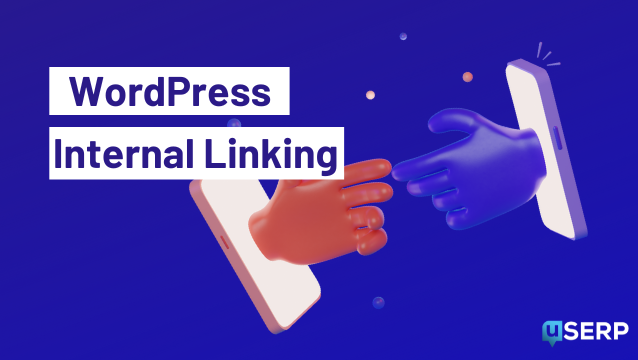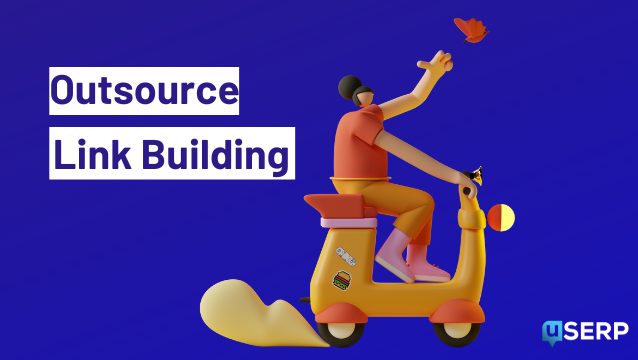Don’t launch a product in 2023 without a go-to-market strategy.
The step-by-step framework associated with a GTM plan can help you determine your target audience, what kind of marketing plan will best reach them, and the ideal sales strategy you can use to maximize your return.
Through my agency, uSERP, my team and I play an important role in helping businesses of all shapes and sizes get the word out about their products.
Our link-building efforts are integral for products and services, both physical and digital, that are trying to get started and get noticed. But that’s only a tiny piece of a much larger go-to-market strategy.
Whether it’s through uSERP or any kind of marketing work I’ve done in my career, there are key questions I need to ask before I can help a brand implement its go-to-market strategy.
These include gems like:
- Who are you trying to reach?
- What kind of competition are you facing?
- What’s your target audience’s ideal message style?
- What platforms are you going to market on?
- Why does your target audience need what you offer?
If someone answers any of these with an “I don’t know,” it’s clear that they have yet to flesh out their go-to-market strategy.
Without the hard work and research that goes into every step of a go-to-market strategy, you could focus on the wrong audience, enter into an overly saturated marketplace, or select the wrong platforms and strategies. That’s why it’s crucial to learn and plan accordingly.
There’s so much that goes into a go-to-market strategy. You need to create a marketing plan, but it goes a lot deeper than that.
When creating a GTM strategy, you’ll need to dive into concepts like your:
- Buyer persona
- ICP
- Market positioning
- Business model
- Content marketing efforts
- Brand awareness
- Sales funnel
- And so much more
Let’s take a closer look at what a go-to-market strategy is and how you can effectively bring your new product onto the grand stage.
What’s a go-to-market strategy?
Your go-to-market strategy is a multi-step strategic plan that helps your company bring a new product to market. This strategy can help you craft and launch a successful marketing campaign that effectively reaches your target audience, generates buzz, and ultimately drives sales and adoption of your new product.
It focuses on identifying the target audience, including their pain points and preferences, and launching a marketing plan and sales strategy.
To successfully set up a go-to marketing strategy, it’s crucial to first establish a clear and comprehensive product roadmap that outlines the timeline, goals, and key features of the product development process.
Image is custom graphic
At the start of your go-to-market strategy (often abbreviated as GTM), you’ll need to identify a problem, figure out who experiences it, and then lay out how your product can help fix it. This process often involves creating a product requirements document that outlines the precise features, functionalities, and specifications your product needs to have in order to effectively address the identified problem.
When I say product, by the way, I don’t just mean a physical item. It could be software, a line of NFTs, or a digital service. In case you want to integrate a big blockchain like Ethereum, add an extra $50,000 to the NFT marketplace development cost you already estimated.
In the case of my company, the target audience is business professionals and decision-makers looking to improve their visibility on search engines like Google. (By the way, if that’s you, let’s talk when you’re done reading this!)
Once you understand what you’re marketing and who it’s for, you need to examine the market and determine how best to roll that product (or service) out to your target audience.
Your GTM strategy should consider several factors, including your competitors, the market’s state, and your target audience’s communication preferences. Additionally, every step of this journey should have market research, historical data, and a clear vision for the future behind it.
Your GTM strategy is much like a newspaper article (I know, how archaic, right? You can pretend I said blog if it helps!). It deals with the common questions of Who, What, Where, When, Why, and How.
Namely, it’s asking:
- Who is this for?
- What are you selling?
- Where are you selling it?
- When are you launching?
- Why is this needed?
- How will you get it out to your ideal audience?
Why is a go-to-market strategy essential?
Now that you understand a go-to-market strategy, it’s time to talk about why it’s so necessary.
You need to rely on a go-to-market strategy when launching a new product because it provides you with a wealth of information that can pave the way for global success.
Much like you wouldn’t go exploring the deepest jungles of Africa without a map and a guide (or, at least, you shouldn’t!), you wouldn’t launch a new product without a well-thought-out GTM strategy in place.
If you want your launch to succeed and lay the groundwork for future success, you’ll need information about your competitors, the market, and your audience’s specific wants and needs.
Unfortunately, the world’s most fantastic product could stumble without a well-thought-out GTM strategy.
Some of the most famous product flops like Microsoft’s Zune, New Coke, Crystal Pepsi, the Apple Lisa computer, and Google Glass all might have had a better shot with a well-thought-out go-to-market strategy.
These products flopped for multiple reasons — from charging too much to not measuring the power of its competitors (looking at you, Zune) to not understanding the audience’s basic needs.
Now, a company like Google or Microsoft can recover from something like this. They’re household names worth billions of dollars.
But smaller, privately owned businesses don’t have the same luxuries, so doing your homework is essential.
As a marketer, I always love it when I’m working with someone who knows their target audience, understands their market, and knows what their competitors are doing (both right and wrong). These are people who have a winning GTM strategy.
How to set up your go-to-market strategy
Alright, I’ve walked you through the what and the why. Now it’s time for the real meat and potatoes.
The how.
The steps listed here are my take on what makes a great GTM strategy. It includes what I’ve observed throughout my career working with businesses like yours.
Ready? Let’s dive in.
1. Study your target audience
The first thing you’ll need to do when creating your go-to-market strategy is to identify your target audience. That means who they are, their pain points, and how much they’re willing to pay for your product.
Consider creating an ideal customer profile and segmenting the audience with buyer personas.
As a marketer, I’ve seen hundreds, if not thousands, of these, and they’re always beneficial. You’re basically listing out the characteristics of your ideal customer.
But there are some differences between an ICP and buyer personas.
An ideal customer profile describes the perfect potential customer for your product. They have pain points you can solve, can afford the asking price outlined in your pricing strategy, and are actively looking for the solution your product creates.
A few factors to consider when creating your ideal customer profile include the following:
- Where they live
- Their income
- The factors that influence their decision-making
- Their preferred media platforms
- Their pain points
If you’re a B2B business, you’ll also want to determine the following:
- Your customer’s industry
- The size of their organization
- Their budget
- Who the decision makers are
But, of course, an ideal customer doesn’t make up the entire audience. You’ll have many different audience segments, some with different pain points, values, and communication preferences.
That’s why you must create buyer personas, or blueprints of different audience segments, broken down by various demographic information.
Each segment might require a different marketing plan, and together they make up your target market.
2. Create a value matrix
Once you know who you’re marketing to, you’ll need to create your value matrix. That’s a guide on marketing to each buyer persona, including their pain points and how you’ll address them.
A key component of the value matrix is the marketing message you’ll use to address their problem and offer your solution.
I’ll explain.
A complete value matrix should include the following:
- A list of your individual buyer personas;
- A detailed outline of their pain points;
- Addresses how your product can alleviate those points and;
- It summarizes it in basic marketing messages to push your product out to these groups.
It’s a must-have document to have around when rolling out your product.
3. Analyze the competition
Whether I’m marketing for myself or one of my clients, I first want to know who we’re up against. There’s an old quote from “The Art of War” by Sun Tsu that says:
“If you know the enemy and know yourself, you need not fear the result of a hundred battles.”
Maybe that’s a little dramatic on my part, but I thrive on competition. And make no mistake about it because business is competition.
Your GTM strategy should include a list of your chief competitors.
Once you know who they are, ask yourself questions like:
- What are they doing wrong?
- What are they doing right?
- Do they appeal to all of your buyer personas?
- What kind of market share do they have?
- What can you do to differentiate yourself from them?
Take the example of Microsoft from earlier.
It launched the Zune against stiff competition from Apple — namely, the iPod.
Apple already had the market cornered, and they had too much of the market locked down for Microsoft to make a dent. That’s why the Zune ultimately didn’t work. It wasn’t attacking the situation from a different angle.
Fast forward to the tablet wars.
Again, Apple dominated the scene with the iPad. Then, Microsoft released its Surface Pro. Learning from its previous mistake, Microsoft developed a tablet that addressed a need that Apple left unfulfilled.
It developed a tablet that had the functionality of a computer.
By understanding its chief competitor’s shortcomings and position in the market, Microsoft designed a product that saw great success and is still on the market, competing with the iPad today.
Holger Sindbaek, the founder of a gaming platform, Online Solitaire, says, “When I ventured into the online gaming industry, I quickly realized that the market was saturated with countless solitaire platforms. But instead of being discouraged, I took a deep dive into understanding what top competitors were offering and where they were falling short. While many had flashy graphics, I noticed they lacked user-friendly interfaces and smooth gameplay. So, I focused on refining those aspects, ensuring our platform provided an unparalleled user experience. Today, our user retention rate speaks volumes. It’s not just about entering the market; it’s about understanding the gaps and positioning your product to fill them.”
4. Layout the buyer’s journey
When creating your go-to-market strategy, you need to understand the buyer’s journey for the audience you laid out in step one.
That means understanding how your prospects progress from being aware of your product to becoming full-fledged paying customers. Every company I’ve worked with has its own unique buyer journey, but they all have the same skeleton.
There are always three main stages of a buyer’s journey.
It starts with awareness — when your customer realizes there’s an issue they need to resolve, and they start looking for a solution. This stage is when they discover your company and start looking into you.
That leads them into consideration, and they now know of you and begin weighing in on your product’s pros and cons. Center your messaging around your value proposition and design it to woo your target customers as they enter the last stage.
Finally, there’s the decision stage. This stage is where a purchase decision happens. However, if you have a product that customers can purchase more than once, the buyer’s journey continues as you work to ensure the happiness of your new customer and try to upsell or retain them.
5. Set realistic goals
Goal setting is critical because it gives you a finish line. You’ll use it as the benchmark to measure your success or failure. Therefore, you must set goals for your GTM strategy that are specific, measurable, and realistic.
When I sit down with a client and they start laying out these lofty goals for their first year, I know it’s time to talk about expectations and reality. (That doesn’t mean we can’t scale massively fast. I just prefer to underpromise and over-deliver! 😉)
You need to be honest with yourself and map out SMART goals.
You know the acronym, but here’s a refresher. SMART stands for:
- Specific
- Measurable
- Achievable
- Realistic
- Time-bound
You’ll also want to take this opportunity to identify your key performance indicators or KPIs. Then, you can use these metrics to track your progress toward your SMART goals.
Some KPIs you could measure include:
- Click-throughs from marketing platforms like Google Ads
- Conversions
- Social media mentions
- Website visitors
- Bounce rate
6. Set up your processes
Next, you need to set up the processes to execute your plan.
Your action plan should detail everything you need to do, when it should happen, and how you want your marketing and sales team to do it. As part of your process, make sure to check a small business tax preparation checklist. this way you make sure that whatever income or expenses your business gets, all the important information is also transferred to taxes.
It can also inform third-party marketing partners like yours truly who need to get a sense of how you do things quickly.
Here, you’ll detail your content marketing strategy and the ad platforms you’ve selected carefully. You’re creating a plan that’ll show your team how they should interact with the target audience and how you’ll measure their success.
This task includes laying out your goals, solidifying your brand voice, outlining your content guidelines, understanding what payroll system works for your company and human resources, choosing any templates your team wants to use, highlighting your buyer personas, and incorporating logo design. Additionally, considerations for virtual machine hosting may be relevant in ensuring a seamless digital infrastructure for your operations.
Remember, email marketing remains one of the most effective channels; statistics on email marketing reveal an average ROI of $40 for every $1 spent. Don’t neglect this powerful tool when crafting your action plan. Develop your email list, create engaging content, and track your results to ensure your email marketing strategy complements your broader go-to-market efforts.
Image is custom graphic
You should also create processes around tracking your KPIs. If something isn’t working, you might need to change your process. To promote habits of success, you could make it a part of the process to check on all measured KPIs at the beginning of each month and compile them in a report that the team will review.
7. Reduce acquisition costs
When you’re new to the market and don’t yet have an established reputation, your customer acquisition costs will be higher. But, over time, you can bring that cost down, improving your profit margin with better market positioning.
Let me give you a quick example of what I mean.
Let’s say you know that for every 1,000 leads you generate, you typically make 250 sales. That’s a 25% conversion rate, so good for you! If your goal is to make 1,000 sales. That means you’ll need around 4,000 leads to reach your goal.
You should know by now what your cost per lead is. That’s the money it takes to draw in one new person.
Let’s give it a nice manageable number, like $20. To get 4,000 leads, you’ll need to pay out $80,000 in acquisition costs.
But as your company grows, you’re starting to generate 1,000 leads through referrals. Thus, earning more money.
Now you only need to bring in 3,000 leads to hit your goal. That $80,000 in acquisition costs just turned into $60,000. You’ve saved $20,000 but still make the same amount. That $20,000 now gets added to your profits.
As your name grows and your customers start sharing your content and talking about you to friends and family, you’ll see a reduction in acquisition costs.
You might even be able to lower some of your marketing budgets for specific platforms. If, for example, you’ve developed a massive community around your Facebook page, then you can reduce your Facebook advertising budget.
Wrapping up
In my career, I’ve worked with many big-name companies that are experts at launching products.
I’ve seen firsthand that it’s hard work, but it’s also rewarding.
There’s no way around it — if you want a successful product launch, you need to implement a killer GTM strategy.
By adhering to the advice in this guide, you’ll be able to roll out your product to great success.
To review, make sure you’re:
- Studying your target audience
- Creating your value matrix
- Analyzing the competition
- Laying out your buyer’s journey
- Setting realistic goals for yourself
- Creating processes for your team that are easy to stick to
- Reducing acquisition costs over time to improve your profit margin
Now, go out there and start planning.
Good luck!
- The State of Backlinks for SEO in 2024: What 800+ SEOs Think About Link Building - January 10, 2024
- Why You Should Accept External Contributors for Your Blog: 7 Benefits of Collaborative Content - October 18, 2023
- 10 WordPress Image Optimization Plugins for a Faster Website - January 25, 2023








